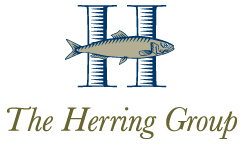This article originally appeared on LandscapeManagement.net on April 2, 2023 as a part of The Herring Group Benchmark Report recap series. Greg Herring regularly writes for Landscape Management, providing financial analysis and insights tailored to landscape business owners.
In January, my team and I hosted a High Performers webinar for the 151 participants in The Herring Group’s Ninth Annual Landscape Industry Benchmark Report.
We selected three landscape companies from our Benchmark Report participants, analyzed their financials and interviewed them about how they perform at such a high level.
In this case, we defined “high performers” as landscape firms that consistently show an operating profit margin above 10 percent. We verified their results through the data they provided for our report.
We focus on operating profit margin because it is a single indicator that effectively measures customer satisfaction, management effectiveness and operating efficiency. Operating profit is revenue minus direct job expenses, indirect job expenses and overhead expenses — including straight-line depreciation expenses. Operating profit margin is operating profit divided by revenue — a percentage.
For companies with revenue greater than $3 million, I recommend you target an operating profit margin of 12 percent and settle for anything above 10 percent as an initial goal. Smaller companies can often earn higher margins because the impact of an effective owner is much greater than in larger companies.
Common traits
The high-performing companies we analyzed on the webinar are varied in their sizes, markets and specializations, but they consistently achieve a 10 percent-plus operating margin. How do they do it? We identified the following habits they have in common.
Habit No. 1: Rely on data. These companies do not perform at a high level by accident. The companies are methodical and analytical in decision-making. These companies also communicate effectively, so teams always know if they are winning or losing. For example, each salesperson has a sales goal reviewed weekly. For maintenance operations, dashboards in Aspire show whether crews are over or under hours on their jobs in real-time.
Habit No. 2: Focus on retaining customers. All three of our high performers have customer retention rates above 90 percent. It is much easier to grow and remain profitable when you do not lose customers. Customer retention starts with knowing the type of customer or project you want. These companies do not pursue every opportunity.
Habit No. 3: Price to value. Because these companies focus on data, their executive teams know their costs. More importantly, because these companies perform at a high level and focus on customer satisfaction, they price to the customer’s perceived value of their services. In some cases, these companies provide concierge-level service so they can demand a higher price. They are not selling hours.
Habit No. 4: Find a way. A company cannot be a high performer if its management team makes or tolerates excuses. These high performers eliminated the “whataboutism” by holding team members accountable. Each of the owners of these companies has a competitive spirit. They want to win. They hire managers who also want to win. Together, more often than not, they find a way to win.
Check out the series
To learn more about how you can turn your landscape company into a high-performing firm, don’t miss the first two articles in my series about the results of our Benchmark Report.
In January, I explained that most companies can be a lot more profitable than they are. I also presented a chart to show just how much money you leave on the table if you are not hitting 10 percent.
In February, I explained why this report is the most accurate representation of your company’s performance and six ways you can use it to improve your business.
With the right mindset and plan, there is no reason your company cannot quickly turn itself into a high-performing landscape company.

